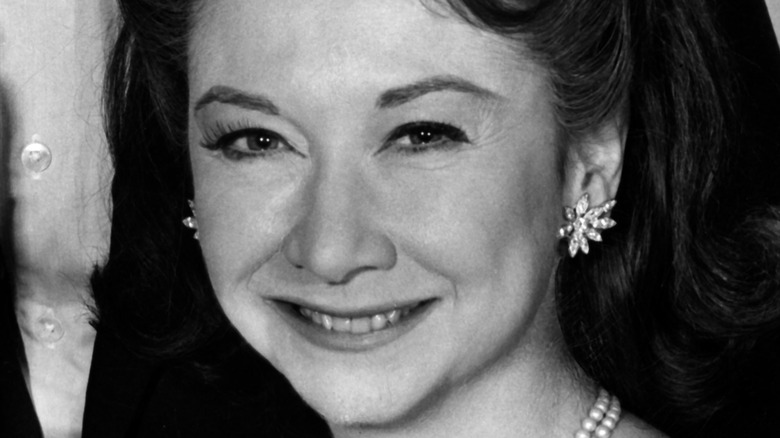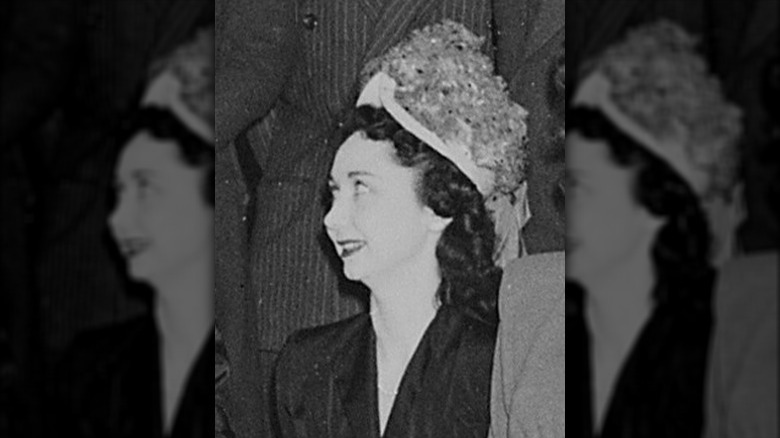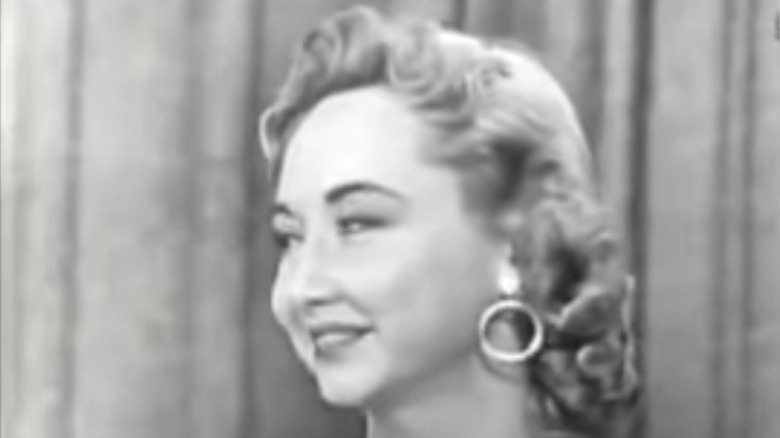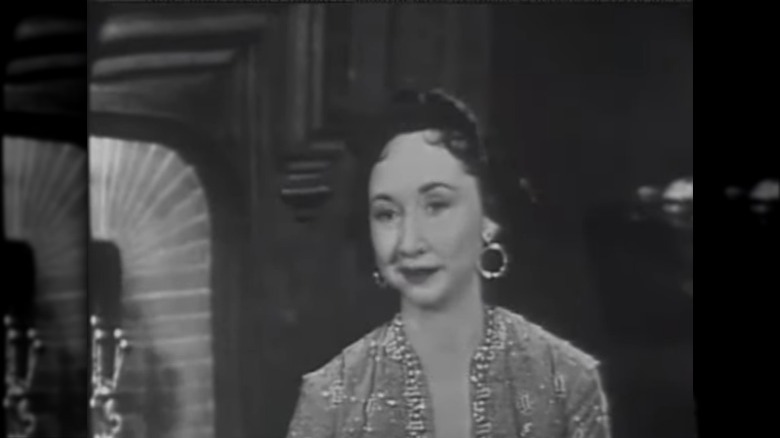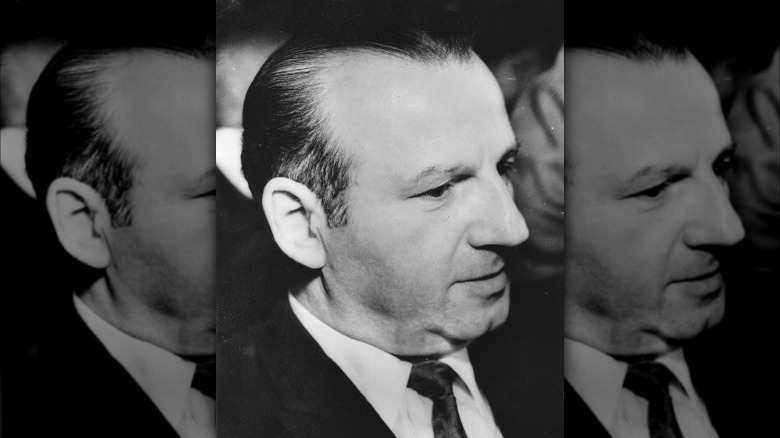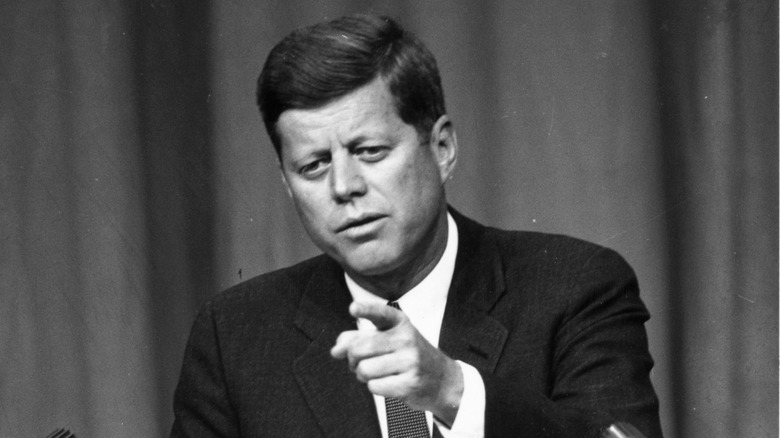The Mysterious 1965 Death Of JFK Assassination Investigator Dorothy Kilgallen
There are many famous figures from the 1950s and '60s who are still widely known among the general population today. Musicians such as Sam Cooke and John Coltrane, who died in 1965 and 1967, respectively, and movie stars such as Marilyn Monroe, who died in 1962, remain eternal icons with loyal followings who still enjoy their work today. Similarly, writers of the period are still widely admired, with mid-20th-century classics such as J.D. Salinger's "The Catcher in the Rye" still among the biggest-selling books in the world (via The Washington Post).
But while the names of countless figures who lived and died over half a century ago remain familiar to us, many of the most revered people in American popular culture from the period in question have grown more obscure as the years go by. One of these is Dorothy Kilgallen, a much-admired writer and television personality in her time who is little known today.
Perhaps it is the ephemeral nature of Kilgallen's work that has sadly excluded her from the annals of posthumous fame. She was primarily a newspaper columnist — a wildly successful one — whose most famous column, "The Voice of Broadway," contained insightful show business news and gossip and was widely syndicated throughout the United States, according to the Hollywood Walk of Fame, who celebrated Kilgallen with a star in 1960. Kilgallen's star, however, was actually for her television work, as a long-running and much-loved panelist on the popular "What's My Line?" Per the Internet Movie Database, Kilgallen appeared in 736 episodes between 1950 and 1965, the year of her shocking, untimely — and, for many, suspicious — death.
Dorothy Kilgallen: an underappreciated investigator
While Dorothy Kilgallen's fame in her own lifetime came primarily as a result of her entertainment and gossip columns and her television and radio appearances, she was also a well-respected investigative reporter with many impressive assignments to her name. As described in Smithsonian Magazine, one of Kilgallen's most famous jobs in the early years of her career was a 24-day round-the-world trip, which was recounted in the bestselling "Girl Around the World" in 1936. Her other early assignments included coverage of Franklin D. Roosevelt Jr.'s wedding to Ethel DuPont and of the coronation of the British monarch King George VI, according to "Women in Communication: A Biographical Sourcebook." Kilgallen was also widely read as the most prominent syndicated reporter of the notorious Sam Sheppard murder trial in 1954, according to Cleveland.com.
And despite her income and fame as a witty and charming TV personality, at the time of her death in 1965 Kilgallen was tackling one of the biggest stories of all time: the 1963 assassination of President John F. Kennedy. As noted by Lee Israel, in the months before her death Kilgallen was using her sterling reputation as a journalist to interview some of the most important figures connected to the killing, leading some to believe that her investigations may have been linked to her death.
The death of Dorothy Kilgallen
As reported in The New York Times, Dorothy Kilgallen was found dead in her New York five-story townhouse on November 8, 1965, just hours after filming what would be her last-ever episode of "What's My Line?" Though Kilgallen's death was originally ascribed to "natural causes," a later medical report argued that the famous journalist and TV star had died as a result of a "reaction of a combination of alcohol and barbiturates."
The same report noted that the police saw "no indication of violence or suicide." That the fit and active Dorothy Kilgallen was dead at the age of just 52 was deeply shocking for those who knew her and for her fans across the country.
According to Lee Israel's 1979 biography "Kilgallen," an estimated 10,000 mourners visited Kilgallen's coffin, and she was mourned deeply by numerous famous friends including Joan Crawford. In the years since its publication, Lee's biography has become the definitive text on the life and death of Kilgallen, and has stoked speculation that the official story of her death, with the biographer claiming outright that Kilgallen's death was not accidental, but was the subject of a cover-up.
If you or anyone you know is having suicidal thoughts, please call the National Suicide Prevention Lifeline by dialing 988 or by calling 1-800-273-TALK (8255).
A suspicious death?
Per Lee Israel's biography, Kilgallen's death is especially suspect due to the fact that police officers at the scene instantly ruled out suicide or foul play upon discovery of her body, meaning that her death was simply written off in "circumstances undetermined." If the police had even entertained the idea of suicide, there may have been a greater amount of evidence through which to piece together how why exactly Kilgallen died. Writers interested in Kilgallen's death, such as Israel and Mark Shaw, have highlighted numerous strange details that seemingly undermine the official story of accidental death.
According to Israel, it was Kilgallen's hairdresser who found her body, positioned upright in bed with a book, but wearing full make-up — a detail that seems incongruous with the story the journalist was settling down to sleep. Another suspicious detail of the scene is the fact that the book found open next to Kilgallen's body was the latest novel by Robert Ruark. However, the book was one that she had just recently finished reading — her hairdresser later recalled discussing it with her — so why would she be reading it again so soon? And where, Israel asks, were Kilgallen's reading glasses, which are not mentioned as being present in reports of the crime scene, but which the vision-impaired journalist would certainly have been wearing if she were reading at the time of death?
Close to the Kennedy assassination
For those who suspect that there was more to Dorothy Kilgallen's untimely death than meets the eye, it is her research into the circumstances of the assassination of John F. Kennedy that makes the journalist's death seem suspect and potentially premeditated. Lee Israel notes that Kilgallen was alone among the myriad journalists covering the Kennedy assassination in that she was the only journalist to privately interview Jack Ruby (pictured), the killer of Lee Harvey Oswald. She was alone with Ruby for eight minutes at a safe house soon after his arrest.
This detail alone hints at the uniquely close to the story the veteran crime reporter Kilgallen was. However, as Israel concedes, though Ruby may indeed have given Kilgallen the inside scoop as to why he really shot Oswald — that he might have revealed to the reporter some candid detail that blew the Kennedy assassination wide open — we will never know, as the journalist never once published a word about their meeting. For all the world knows, Ruby, who was known to be agitated and in poor mental health at the time, may simply have been unintelligible or may have said nothing at all.
However, in recent years interest in the circumstances surrounding the death of Dorothy Kilgallen has been rekindled, by one particular writer, Mark Shaw, whose 2016 book, "The Reporter Who Knew Too Much" and several follow-ups, have argued strongly that Kilgallen was murdered because of information she had gathered concerning the assassination of JFK and her frequent criticisms of the Warren Commission.
A note on Lee Israel and further skepticism
Though Lee Israel's "Kilgallen" biography was well-received upon its release and remains the wellspring for conjecture over the last hours of Dorothy Kilgallen's life and the exact nature of her death, there is reason to believe that Israel's own integrity when it comes to separating fact from fiction might well be called into question.
As noted by The New York Times, Israel was a respected journalist and biographer at the time of the release of her Kilgallen biography, but her career unraveled within a few years when her unofficial biography of Estée Lauder was rush-released to undercut Lauder's official memoir, leading to a critical savaging. Somewhat surprisingly, Israel then became an out-and-out literary forger, who stole letters from famous figures such as Ernest Hemingway and Noël Coward from public libraries and replaced them with homemade versions, so she could sell the originals to autograph collectors. Later, she created her own letters, imitating the writing style of writers and celebrities. Mark Shaw is adamant that Lee Israel's research into the death of Kilgallen is watertight, and that despite her career as a thief and forger the arguments she makes in the epilogue of "Kilgallen" are credible. However, Israel's cynical second "career" invariably casts doubt on the claims regarding the death of Kilgallen in her biography.
Experts, meanwhile, have claimed that the theory Kilgallen was murdered has been "thoroughly debunked," according to the San Diego Union-Tribune, while Skeptic magazine notes that even among JFK conspiracy theorists Kilgallen's death is a fringe topic, and that "no one serious" believes she the target of an assassination herself.
